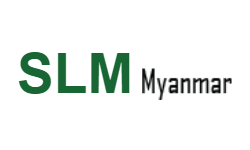- Support COVID-19 communication campaigns
- Cash or lending support to smallholder farmers who have lost sales revenue or remittance income to support input purchases in time for monsoon planting
- Complement support with advice on productivity enhancement and market connectivity
- Following the lifting of movement restrictions, establish rural cash-for work programs
Total 171 respondents from 82 communities were involved
Study population
Smallholders rural farmers from
- Mindat and Kanpetlet (Hilly Region)
- Nyaung-U and Kyaukpadaung (Central Dry Zone)
- Labutta (Delta/Coastal Region)
Data collection – 11 to 22 May by telephone interview (2 participants/village)
COVID-19 communication
Key Findings
- Almost all interviewees have good knowledge on preventive measures of COVID-19
- 64% believe that COVID-19 can be transmitted by eating food/meat bought from markets
- 80% have good knowledge on 3 out of 5 WHO food safety measures
Policy Implications
- To ensure environmental sanitation and established food safety practices, for instance, promoting WASH and WHO five key food safety measures in communication campaigns
- To ensure profound risk communication and management of COVID19 transmission in a collaboration with relevant organizations
- “Food safety, everyone’s business” Would food safety day (June 7)
- There is no evidence that animals or food of animal origin can transmit the virus COVID-19to humans. (FAO Policy Brief: Food safety in the time of COVID-19)
Cash or lending support to smallholder farmers
Key Findings
- Farmers in Chin State has very limited access to loan Mindat (19%) and Kanpetlet (9%) while more than 80% of farmers has access to loan in other study townships
- 27% of farmers encountered difficulties in repayment of loan and they solved by taking another loan or just paying interest of existing loan
- Interest rate are quite varies
- Participants took loan from MADB (63%), apart from that the remaining were from MoALI Cooperative Department (10%), Private money lenders (11%), Mya Sein Yaung (8%), PGMF (6%).
- more than 70% of the participants have plan to take loan in monsoon season, however, there are barriers mostly due to COVID-19
- Farmers have never used online (97%) or phone (77%) as a medium to buy/sell inputs/harvest.
- Farmers have never used bank transfer (95%) or mobile payment (97%) to settle payments for agri-related inputs/harvest
Policy Implications
- Timely access to microfinance to ensure sustainable production
- Short-term monsoon season revolving loans
- Providing subsidies for farm inputs (inputs are not affordable)
- Need to explore innovative ways when providing cash assistance while using mobile transfer
Productivity enhancement and market connectivity
Key Findings
- 20% of the farmers reported that they have difficulties in selling harvest (from the last season) at the moment. (see the chart for reasons)
- 51% of participants expressed that they have several difficulties in from nursery establishment to the selling of the harvests for coming season.
Policy Implications
- The supply of necessary inputs and accessibility to input-output market have been affected by the overall impact of COVID-19 crisis
- Allowing well functioning market channels while maintaining effective COVID19 control measures
Ensuring Food Security, Nutrition and Livelihoods
Key Findings
- 96% of household identified agriculture, animal breeding and fishing as their primary source of income
- 26% of the respondents replied that their household productions (including rice, veggies, pulses, oil, and livestock) was not enough for household consumption.
- 34% of respondents emphasized that 70-100% of their income was spent on food (see pie chart)Ensuring Food Security, Nutrition and Livelihoods
- 15% of households faced with a situation wherein the household did not have enough food to feed family members during the last 7 days
- While the respondents estimated that 3716 households are also facing similar situation in their community (see table)
- 92% of participants have never received formal transfers such as relief food, cash assistance, livestock, safety net programs, pension schemes, etc.
- 60% of households in study villages anticipated that they may need relief food/ cash relief food, cash assistance, livestock, emergency agriculture assistance in 1-3 month time. (see chart)
- Whereas the respondents estimated that 7092 households may need similar assistance in next 1-3 months
- Farmers responded that the impact of COVID-19 was mild (56%), moderate (40%) and severe (4%) on their lives.
- 42% of respondents identified the most needing area (see pie chart)
Ensuring Food Security, Nutrition and Livelihoods
Policy Implications
- Farmers may face food shortage if COVID-19 is longer
- Providing relief food, cash assistance, livestock, emergency agri-assistance timely
- Promoting Kitchen/home gardening program
- Establishing cash for work program
Key Findings
- Farmers in Labutta responded that impact of COVID-19 on fishery/carb industry was mild (22%), moderate (56%) and severe (22%) on their lives.
- Price decreased and No job opportunities are two main reasons (see pie chart)
- Policy response -> creating job opportunities/ cash-for-work program

Benefit of Home Gardening
FAO SLM-GEF project operationalize kitchen/home gardening program in response to COVID-19
- 81% of respondents think that “Kitchen/home gardening program” can be helpful to compensate household expenditure/ improve resilience and food and nutrition security” in short term
- Policy action -> upscaling of the home gardening program












